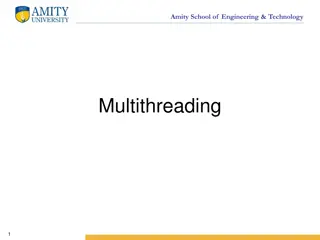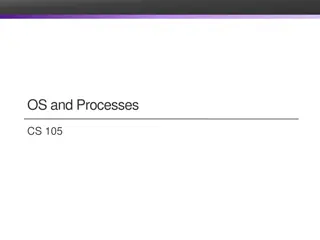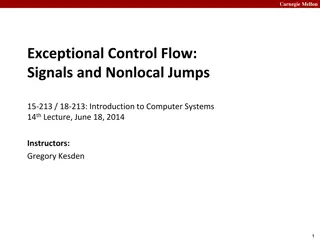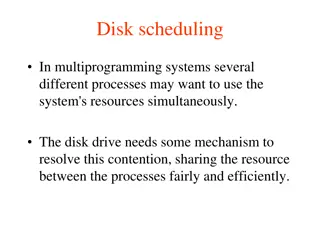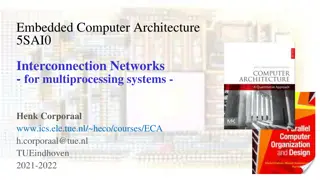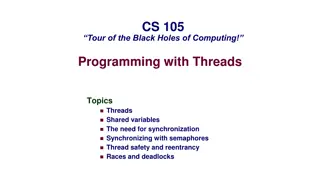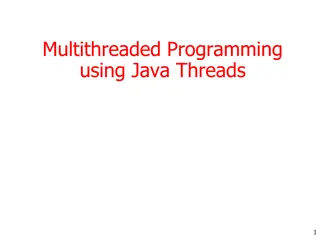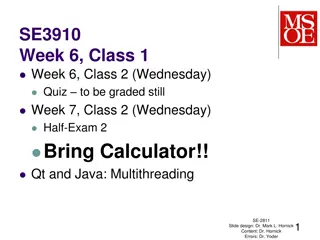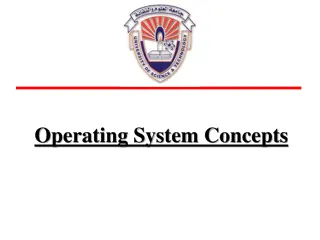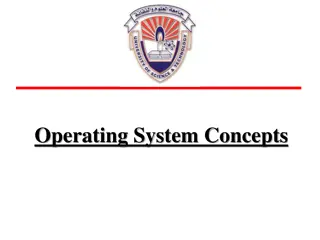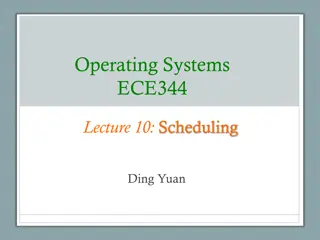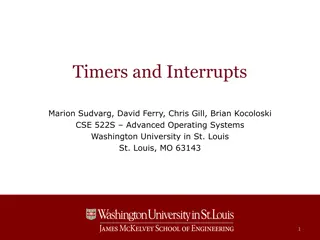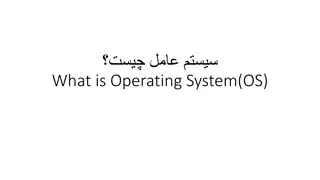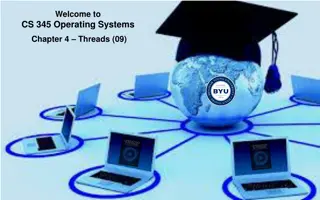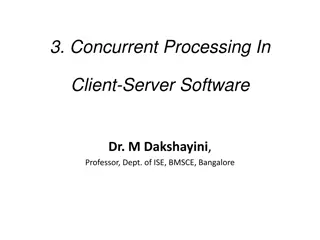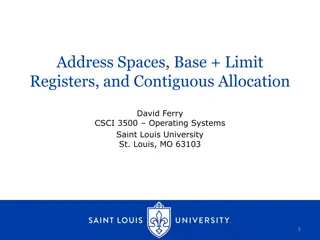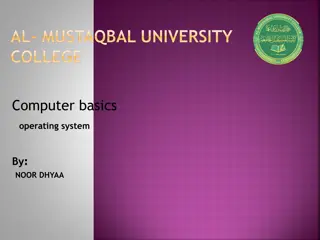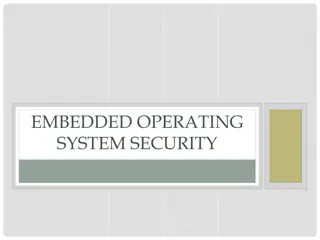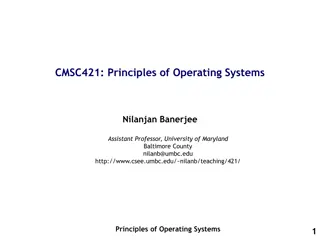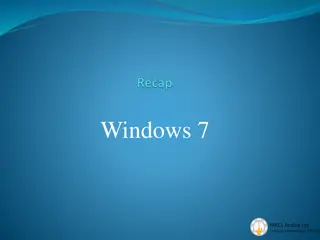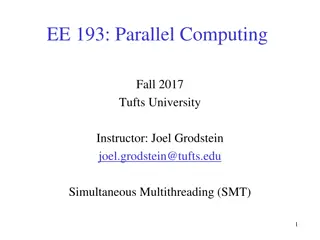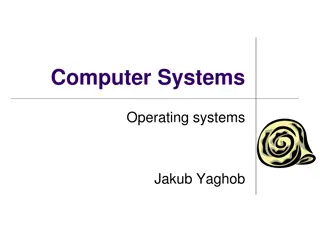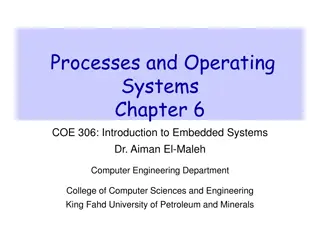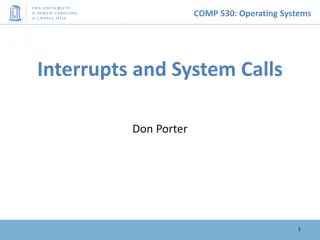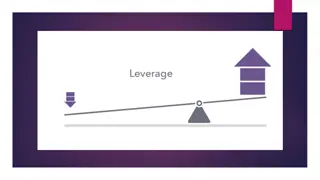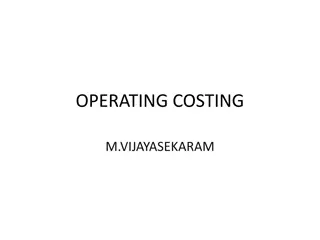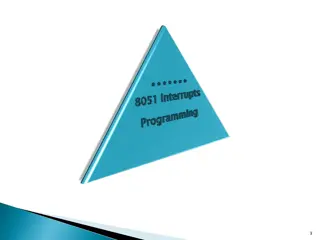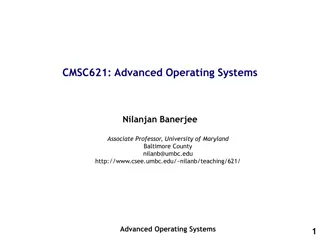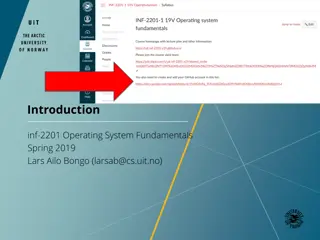Understanding Operating System Concepts: Multiprogramming, Multiprocessing, Multitasking, and Multithreading
In the realm of operating systems, terms like multiprogramming, multiprocessing, multitasking, and multithreading can often be confusing due to their similar appearance but distinct meanings. These concepts play a crucial role in efficiently managing resources in a computing system, particularly in terms of CPU utilization and program execution. Multiprogramming aims to maximize CPU usage by switching between processes efficiently, multiprocessing involves multiple CPU units for enhanced performance, multitasking facilitates concurrent task execution within a single process, and multithreading enables parallel execution of tasks within a process.
Download Presentation

Please find below an Image/Link to download the presentation.
The content on the website is provided AS IS for your information and personal use only. It may not be sold, licensed, or shared on other websites without obtaining consent from the author. Download presentation by click this link. If you encounter any issues during the download, it is possible that the publisher has removed the file from their server.
E N D
Presentation Transcript
- When you approach operating system concepts there might be several confusing terms that may look similar but in fact refer to different concepts: multiprogramming, multiprocessing, multitasking, and multithreading. - In a modern computing system, there are usually several concurrent application processes which compete for (few) resources like, for instance, the CPU. The Operating System (OS), is responsible for the effective and efficient allocation of those resources. - Generally speaking, the OS module which handles resource allocation is called scheduler. On the basis of the type of OS to be realized, different scheduling policies may be implemented.
Multiprogramming The main idea of multiprogramming is to maximize the use of CPU time. Indeed, suppose the currently running process is performing an I/O task (which, by definition, does not need the CPU to be accomplished). Then, the OS may interrupt that process and give the control to one of the other in-main-memory programs that are ready to execute (i.e. process context switching). In this way, no CPU time is wasted by the system waiting for the I/O task to be completed, and a running process keeps executing until either it voluntarily releases the CPU or when it blocks for an I/O operation. Therefore, the ultimate goal of multiprogramming is to keep the CPU busy as long as there are processes ready to execute.
Multiprogramming In order for such a system to function properly, the OS must be able to load multiple programs into separate areas of the main memory and provide the required protection to avoid the chance of one process being modified by another one. Another issue that needs to be handled as well is that large programs may not fit at once in memory which can be solved by using pagination and virtual memory. Finally, note that if there are N ready processes and all of those are highly CPU-bound (i.e., they mostly execute CPU tasks and none or very few I/O operations), in the very worst case one program might wait all the other N-1 ones to complete before executing .
Multiprocessing Multiprocessing refers to the hardware (i.e., the CPU units) rather than the software (i.e., running processes). If the underlying hardware provides more than one processor then that is multiprocessing. A system can be both multiprogrammed by having multiple programs running at the same time and multiprocessing by having more than one physical processor.
Multitasking A task in a multitasking operating system is not a whole application program , as in multiprogramming, but it refers to a thread of execution when one process is divided into sub-tasks. Both multiprogramming and multitasking operating systems are (CPU) time sharing systems. However, while in multiprogramming (older OSs) one program as a whole keeps running until it blocks, in multitasking (modern OSs) time sharing is best manifested because each running process takes only a fair quantum of the CPU time.
Multithreading Multithreading is an execution model that allows a single process to have multiple code segments (i.e., threads) run concurrently within the context of that process. You can think of threads as child processes that share the parent process resources but execute independently. When two or more threads try to access and modify a shared resource (race conditions), the programmer must be sure this will not leave the system in an inconsistent or deadlock state. Typically, this thread synchronization is solved using OS primitives, such as mutexes and semaphores.


